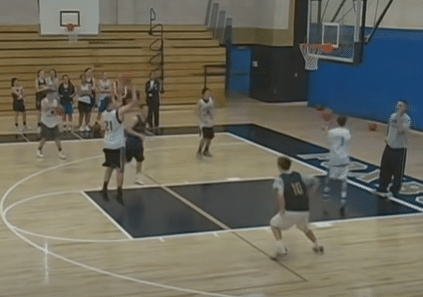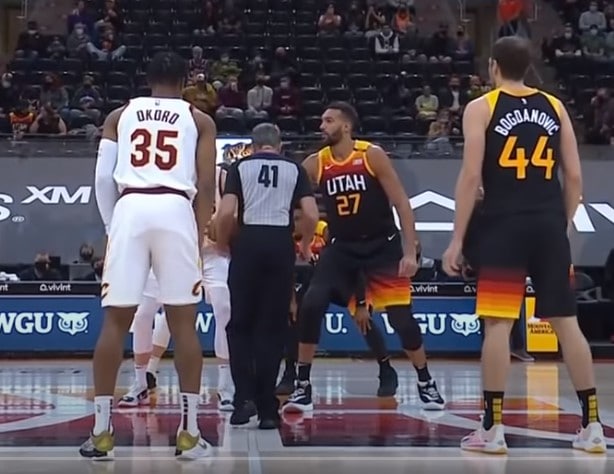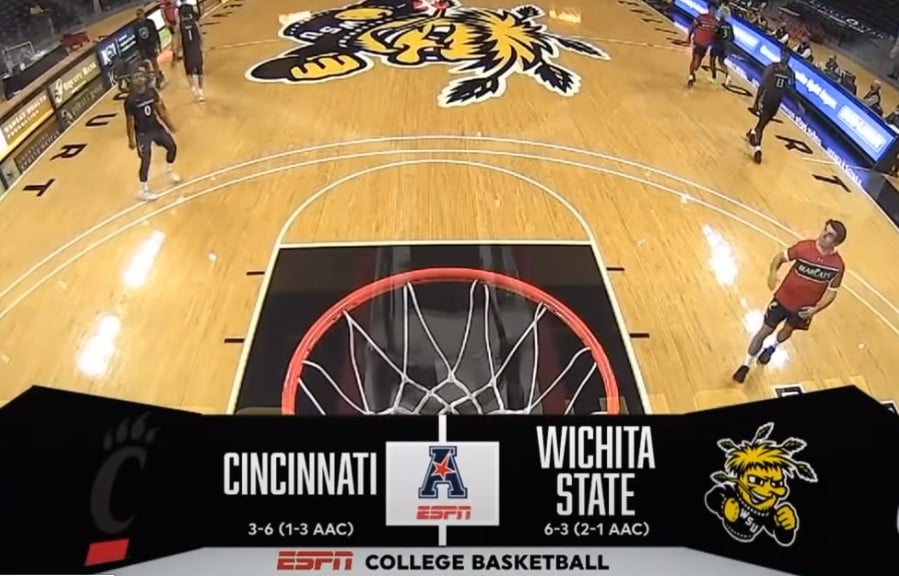Often times the game of basketball is a lot less complicated than we (players, coaches, parents) make it. Certain skills and fundamentals are necessary to be successful at the higher levels but it really comes down to knowing the basic concepts that govern good offensive and defensive basketball. In trying to develop a new skill, players need to learn the fundamental concept behind it. In this post, we will look at the fundamental teaching point that allows a player to become more of a threat off the dribble.
The simplest teaching point for scoring off the dribble is to pick a shoulder of the defender and attack it. This is a basic cue that when expanded on, can create a vast dribble drive arsenal. You as the coach can decide whether you want to say “shoulder” or “hip” or whichever location you want the player to look. I say shoulder because it keeps their head and eyes up while driving, although on the attack dribble they should aim to get their shoulders to the defender’s hip.
The first step in being effective off the dribble is to create space. If you are attacking in the open court or in transition then you already have plenty of space. Pick a shoulder of the defender and attack it. If in the half court, create space with a step back/pop back dribble to give yourself at least six feet between yourself and your defender. Then, you guessed it, pick a shoulder of the defender and attack it.
The next point builds upon the main teaching cue. When you pick a shoulder and attack it in a straight line, the defender can do two things. The defender can slide to take away that drive or they can remain flat footed and not move to take away the drive at all. From the fundamental concept comes two solutions:
- If the defender attempts to take away the drive and you see their chest in the way of your dribbling hand, crossover or change direction and attack in the other direction.
- If the defender, does not move and/or is slow to take away your drive, then continue in the same direction with a simple straight line drive.
Take a look at two clips below that show both solutions described above. First you will see Jason Terry attack the left shoulder of his defender with one dribble. His defender aggressively reacts and moves to take away his right hand drive by getting his chest in front of the dribble, which cues Terry to quickly crossover and attack left.
The second clip shows Brandon Roy attacking in a straight line with his right hand at his defender, Jason Kidd’s left shoulder. As Roy gets almost two feet away from Kidd, Kidd still hasn’t moved to take away the drive. This allows Roy to simply continue with the straight line drive right past the flat-footed Kidd.
Keep it simple when first starting to develop your driving skills. Explain the fundamental concepts and teaching points to your player. Then work on them reading the chest of the defender by adding guided defense on their dribble moves. Finally, put the player into various live 1on1 situations to help them apply the concepts to an active defender. Work on 1on1 in transition and in the half court with the player already having an active dribble to start.
Players need to understand they don’t need a million dribbles in place or a whole repertoire of dribble moves. Just pick a shoulder and attack it, then read what the defender does. Thanks for reading.
Tammer Farid is currently an Assistant Coach at Baruch College in New York City. He is the Co-Founder of OneBasketball, a new basketball player development company based out of the New York City area. He is also the creator of the OneBasketball App, a basketball skill development program for the iPhone and iPad.





0 Comments